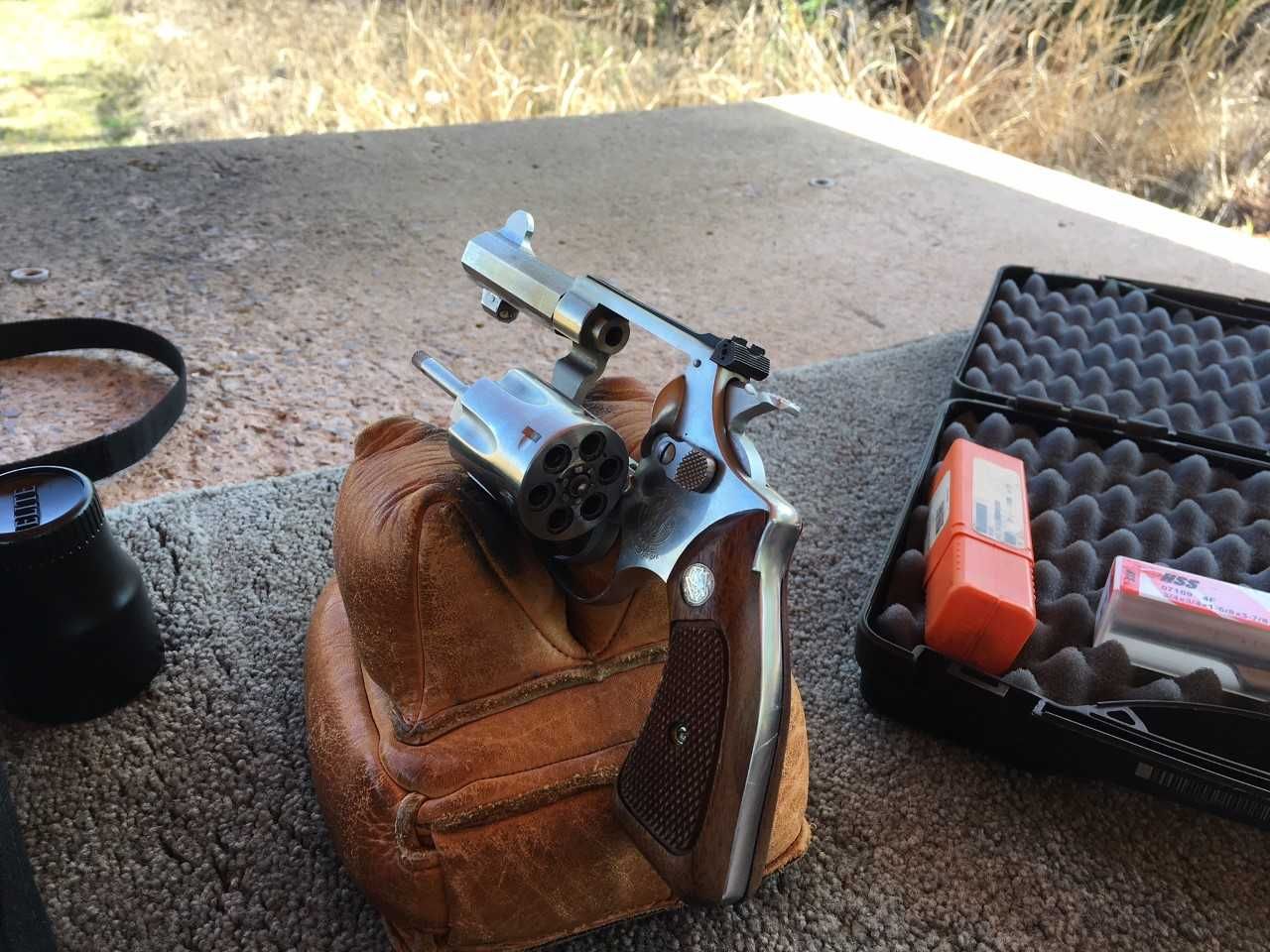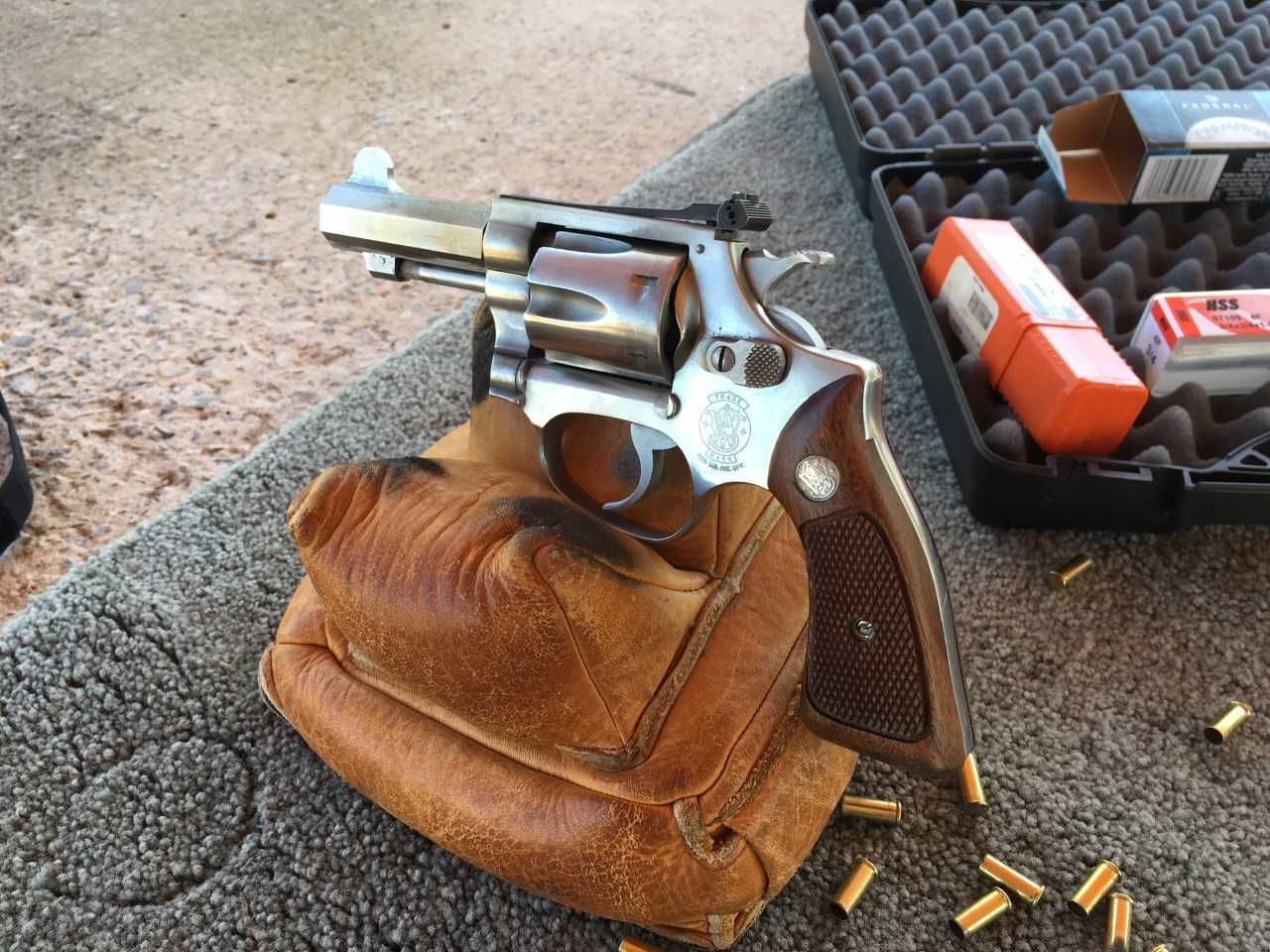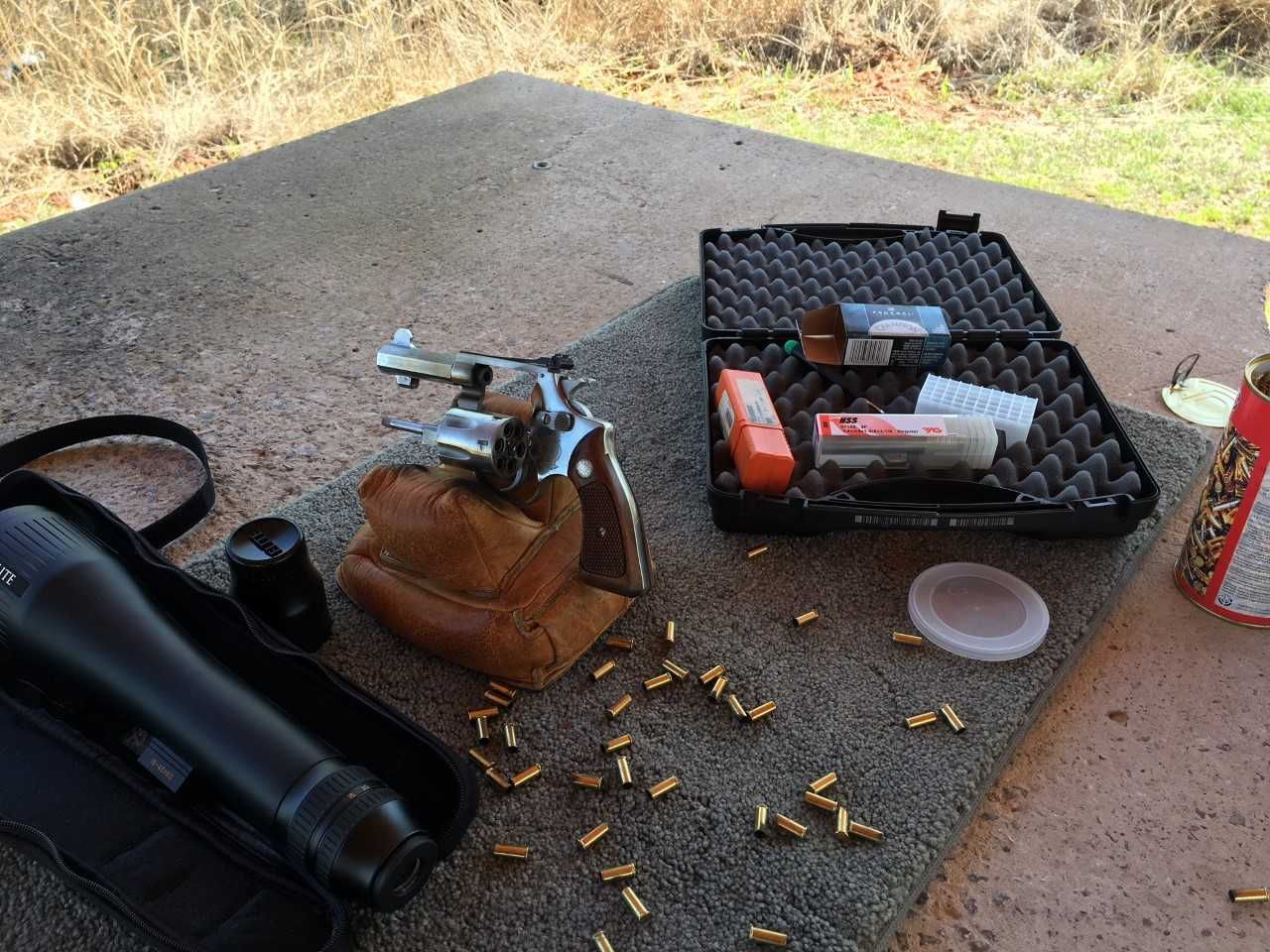I had to play hookie from work for a few hours, but I finally shot the 3" Octa-63. Fortunately, there were only two people at the range, and they were leaving, so I had everything to myself for once.
Here is an obligatory pic while the barrel was still virgin (note the rear sight in its lowest position):

Based on the current dimensions alone, my front sight blade is .075" too tall...but too tall is a subjective thing, and the question becomes, "Where along its range of adjustment should the rear sight be when sighted in for the load one feels will be shot most in the revolver?" The quick answer is at its midway point, as this would allow maximum flexibility for
both higher and lower elevation for a wide variety of loads. But, in reality, I know I will be shooting loads X,Y,Z mostly, and I would prefer to have the rear sight at its lowest position for aesthetics sake; it just looks better all the way down, to me. I am a bit conflicted on this, as I know when I'm gone, my kids and grandkids will probably shoot whatever loads they find cheapest, an argument for greatest versatility.
So, jumping to the chase, the loads I shot through this new barrel, which are the loads I will likely be using most, shot 18" low at 25 yards with the rear sight at its lowest position. Kinda what one would expect. With the rear sight raised to its highest position, however, the loads were dead on in elevation at the same 25 yards (BTW, it is always gratifying when the windage is dead on after making and installing a barrel, sort of confirming that I didn't screw anything up too badly

).
More pics (note the rear sight now in its highest position):



The obvious conclusion would ordinarily be to measure the height difference between the highest and lowest rear sight position, divide that distance by 2, and cut the front sight blade down by that distance. That would place the rear sight at the midpoint in its travel for the loads that I was shooting at 25 yards. Not coincidentally, that would be right at .070"...amazing how these things work out like this

.
So, the decision becomes one of aesthetics vs. versatility. Some dismiss aesthetics, but, remember, much of the popularity of the older 63s involves aesthetics, and the whole octagoning of the barrel is largely an aesthetics issue. Also, the front sight blade looks too tall and cartoonish to me, so those aesthetics are also important.
I would appreciate any and all input on this.
In the meantime, I shot the revolver another 200 rounds or so at random pieces of target frame wood and dirt clods lying on the berm. Years ago, I used to shoot my 4" 63s quite a lot during lunch breaks, probably 150 rounds a day for a number of years, to relieve stress from work, so I am intimately familiar with my hit percentage at various objects and various distances. I would say the hit rate with the 3" octa-63 is the same as it was with the old 4" barreled 63s from the past...certainly no worse, and I really like the balance and feel of this little 3". In the end, that is most important to me.
As a brief update on the gunsmithing, I was able to locate (at Brownells, BTW) a new stainless ejector rod detent bolt and spring and should have those in hand soon. I also determined I need a 1/4" shank center drill at least 4" long for drilling the detent lug, also located and coming this way. It has a 7/64" tip diameter, considerably smaller than what I need for the larger diameter of the detent. Anything larger than a 1/4" shank will not clear the bottom of the barrel when drilling the detent lug. Anything smaller is that much less rigid, and anything shorter than 4" won't reach past the threaded barrel tenon to the block.
So, I plan to start the hole with the centerdrill's 7/64" tip, then, while still chucked up, drill all the way through the block with an extra length #44 drill (.086"), then open up the rear (forcing cone side) of the hole with an extra long #25 drill (.1495"). This should make it close to perfect. All that will then be left will be polishing and reinstallation.
Stay tuned.
TBR